How to Reverse a Risk-Averse Culture
The June 3, 2013 issue of The Wall Street Journal featured a front-page article written by Ben Casselman titled, “Risk-Averse Culture Infects U.S. Workers, Entrepreneurs.”
No kidding.
My first book, “How to Grow a Backbone,” published in 2000, identified three elements of Backbone: Competence, Confidence, and Risk-Taking. In the thirteen years that we have been working with these elements, risk aversion has emerged as a national emblem. Mr. Casselman writes “Economists aren’t sure what is behind the decline in risk-taking.”
I am not an economist, so my voice in this particular arena may be invalid. But here, in no particular order, are developments I have witnessed over the past two generations that impact our willingness and ability to take intelligent, purposeful risk.
Explosion of mind-numbing complexity. Couple this with an unprecedented rate of change and it’s easy to see how the fear of missing something important paralyzes even the best and brightest.
The gold star for participation rather than achievement. In an effort to preserve self-esteem, we reward attendance at the price of trial, error, failure and learning. Coping skills, once critical to health and survival, evaporated as the economy soared through the mid- and late-90s.
Reality TV. Letting it all hang out—the cruder the better—may have great entertainment value, but it is a lousy way to teach life skills. Incivility is not welcomed anywhere that matters, so by mimicking “real” behavior, some level of rejection is guaranteed. This rejection fuels poor self-esteem, anger, and in a growing number of cases, retaliation.
Finance as a means of value assessment. If there is no bottom line enhancement to a particular behavior, line of work, or entrepreneurial effort, we deem it value-less. Think about that for a moment. We are shaping the risk-averse behavior we fear, while denying this outcome as we focus instead on potential economic benefit.
Educational decline. In the face of exploding technologies, shrinking attention spans and elevated expectations, educators’ heads have been turned by new teaching technologies, pedagogical theories, union priorities and the like. Results speak for themselves.
Healthcare chaos. Similar to comments above, exploding complexity and demand for financial performance wrought chaos as groups of professionals seeking financial reward got embedded in what was once a relatively simple system of patient/physician interaction.
Decline in the nuclear family. Heck, let’s broaden this to call out a decline in commitment across the board. Sticking with a difficult situation is so yesteryear. When the going gets tough, a dash for freedom, safety and comfort rule the day, no matter promises made in happier times.
The evolution—or more appropriately, devolution—of the US Government.
In the face of out-of-control systems, institutions and social mores, the promotion of physical perfection at odds with reality seems one way to exert personal control. Yet sculpting the perfect body preoccupies many (drawing energy and attention away from other needs) and discourages many others who will never have the time, money, interest or capability to develop six pack abs.
These examples may seem simplistic, even naïve. But they are pervasive and destructive.
There is no simple economic answer to the decline in risk-taking. Which, ironically, points to another reason for such decline: our preference for a quick, clean, proven solution to implement today.
Douglass C. North, at a lecture in Stockholm Sweden December 9, 1993, where he was awarded the Nobel prize in Economic Sciences, provided profound insight. We would be smart to consider his words, particularly those with respect to beliefs.
“Institutions form the incentive structure of a society, and the political and economic institutions, in consequence, are the underlying determinants of economic performance. Time as it relates to economic and societal change is the dimension in which the learning process of human beings shapes the way institutions evolve. That is, the beliefs that individuals, groups, and societies hold which determine choices are a consequence of learning through time – not just the span of an individual’s life or of a generation of a society, but the learning embodied in individuals, groups, and societies that is cumulative through time and passed on intergenerationally by the culture of a society.”
I would argue that we have learned systematically over several generations to embrace risk-aversion. The question today, assuming we value some level of risk-taking behavior, is how to get it back. The role of leaders in championing, and at times demanding, risk taking is key. Intelligent boldness on the part of leaders, marked by vigorous discussion of current beliefs and incentives, unintended consequences, and the urgency of time, sets a standard of thought and action that transforms risk aversion. It requires courage, strength, and a willingness to shake people out of complacency. None of this is easy; all of it is important.
Categories: Culture, Leadership